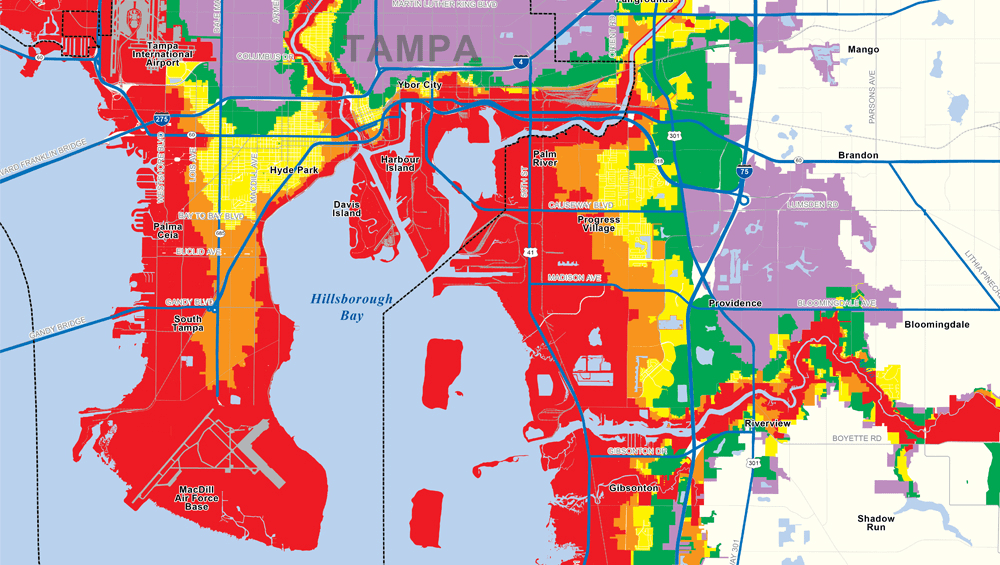Navigating Florida's Evacuation Zones: A Detailed Guide for Residents
As a state that frequently faces natural disasters, particularly hurricanes and severe storms, understanding Florida’s evacuation zones is crucial for residents. These zones have been established to ensure the safety of the public by providing systematic evacuation plans during imminent threats. In this detailed guide, we will explore the intricacies of Florida’s evacuation zones, focusing on specific regions such as Pinellas, Sarasota, Osceola, Polk, and Lee Counties. We will also touch on how to find your relevant flood zone and the important considerations when preparing for an evacuation.
Understanding Evacuation Zones
Evacuation zones are geographic areas designated by local emergency management departments to facilitate organized evacuation during emergencies. Each zone corresponds to certain risk factors related to storm surges, flooding, hurricanes, and more. Properly identifying your evacuation zone is critical as it influences when and where you should evacuate.
Most counties in Florida categorize evacuation zones using letters (A, B, C, D) or numbers, often with an accompanying map that illustrates how each zone is impacted by potential flooding and storm surge. Being aware of these designations can often determine how much time residents need to prepare and evacuate.
 Florida Evacuation Zones by Zip Code
Florida Evacuation Zones by Zip Code
One critical aspect for residents to familiarize themselves with is the correlation between evacuation zones and specific zip codes. Many emergency management websites provide tools and resources that allow residents to input their zip code to identify their designated evacuation zone. This feature can be pivotal during storm season when quick decisions are essential.
Residents should proactively check their zip codes against local evacuation zone maps and resources provided by their county governments. This awareness not only streamlines personal safety but also helps in preparing others who may rely on your guidance.
Focus on Specific Counties
Pinellas County
Pinellas County, known for its coastlines and proximity to the Gulf of Mexico, has established a detailed evacuation plan encompassing several zones. Each zone represents varying degrees of threat from storm surges and flooding. For residents looking for specific information, the Pinellas evacuation zones can be accessed through the county's emergency management website, which provides an updated zone map, safety resources, and preparedness tips.
Sarasota County
Residents of Sarasota County should familiarize themselves with the Sarasota evacuation zone map, as the area is at risk for hurricanes and tropical storms. The zones are fluid and can change based on a storm's track and intensity, so referring to the official county resources is vital. The local government typically undertakes drills and community outreach programs to ensure residents are well-informed ahead of storm seasons.
Osceola County
Osceola County, located inland and subject to flooding, distinguishes itself with distinct flood zone classifications that can differ from coastal counties. Residents can access information relevant to their area by examining the flood zone maps provided by the Osceola County Emergency Management Division. Being aware of one's flood zone, such as when asking “What flood zone am I in?” can prepare residents for every type of emergency.
Polk County
In Polk County, residents must recognize the dual threats of hurricane winds and inland flooding. Polk typically utilizes numbered evacuation zones. Preparedness in these regions requires not only being aware of evacuation routes but also understanding the potential risks associated with local topography and water bodies. The county's website provides comprehensive guides to navigation and storm preparation.
Lee County
Lee County, which includes heavily populated areas such as Fort Myers, has an organized evacuation strategy that categorizes the region into designated zones. The Lee County zone maps are instrumental for residents, with clearly marked areas that depict expected storm surge levels. Access to real-time updates through local media and emergency alerts ensures residents stay informed, enhancing overall community safety.
Preparing for Evacuation: Action Items
Preparation begins long before an evacuation order is issued. Here are some strategic steps residents should consider:
- Know Your Zone: Use your zip code to determine your evacuation zone. Familiarize yourself with how your location correlates to nearby zones.
- Develop a Plan: Create an evacuation plan that includes multiple routes to safety and identifies predetermined shelters.
- Stay Informed: Sign up for local alerts, monitor weather updates, and stay plugged into local news outlets for real-time information.
- Pack an Emergency Kit: Prepare a portable emergency kit with essentials such as water, food, medications, important documents, and other necessities.
- Communicate with Family: Ensure that all family members are aware of the plan. Discuss who will be responsible for certain tasks to ensure timely evacuation.
- Review Insurance Policies: Check your home and flood insurance policies to understand your coverage in the event of damage.
- Practice Drills: Conduct family drills to become familiar with the evacuation process and shorten reaction times.
Conclusion
Navigating Florida’s evacuation zones is a critical component of living in a state prone to severe weather events. The proactive approach of understanding your zone, preparation, and communication can significantly increase safety during emergencies. Whether residing in Pinellas, Sarasota, Osceola, Polk, or Lee County, knowledge and preparedness empower residents to make informed decisions, ultimately enhancing community resilience in the face of natural threats.
As hurricane season approaches, take the time to educate yourself and your family about the evacuation zones specific to your home. By doing so, you ensure not only your safety but also contribute to the overall preparedness and resilience of your community. Stay safe and be prepared.